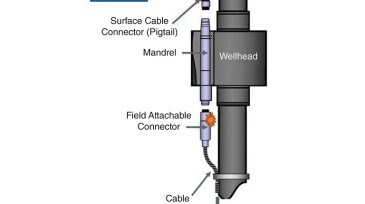electrical submersible pumps
-
SponsoredEach well drilled, stimulated, and completed represents a significant investment in time, resources, and expenses. From artificial lift system design to maintenance scheduling, maximize your investment by ensuring optimal flow and production throughout the life cycle.
-
This paper describes a study aiming to provide input for the well-completion-strategy design and operational parameters for a carbonate reservoir experiencing electrical-submersible-pump failures.
-
This paper describes the findings of a root-cause analysis of wellhead-penetrator failures in Canadian steam-assisted gravity-drainage operations and the mitigation measures taken.
-
This paper discusses the field implementation of a downhole chemical methodology that has positively affected overall productivity for a mature Kuwait field.
-
An artificial-lift concept consisting of an in-well ESP as the primary method and a mudline system as backup has proved effective in an unltradeepwater heavy-oil field.
-
An AI-based application enabled operators to preempt ESP failures while optimizing production.
-
Artificial intelligence systems can be trained to recognize visual content in drawings and provide a simplified context. The complete paper highlights the use of AI to process a scanned drawing and redrawing it on a digital platform.
-
This paper presents the results of a 3-year project aimed at mass field implementation of ultrahigh-speed (UHS) electric submersible pump (ESP) systems in western Siberia.
-
Electrical-submersible-pump (ESP) technology is a proven artificial-lift method for shallow, low-pressure reservoirs such as those found in the West Sak viscous oil field in Alaska.
-
This study examines how subsea processing (SSP) can develop into an important enabling technology for future ultradeepwater-field developments and long-distance tiebacks.










